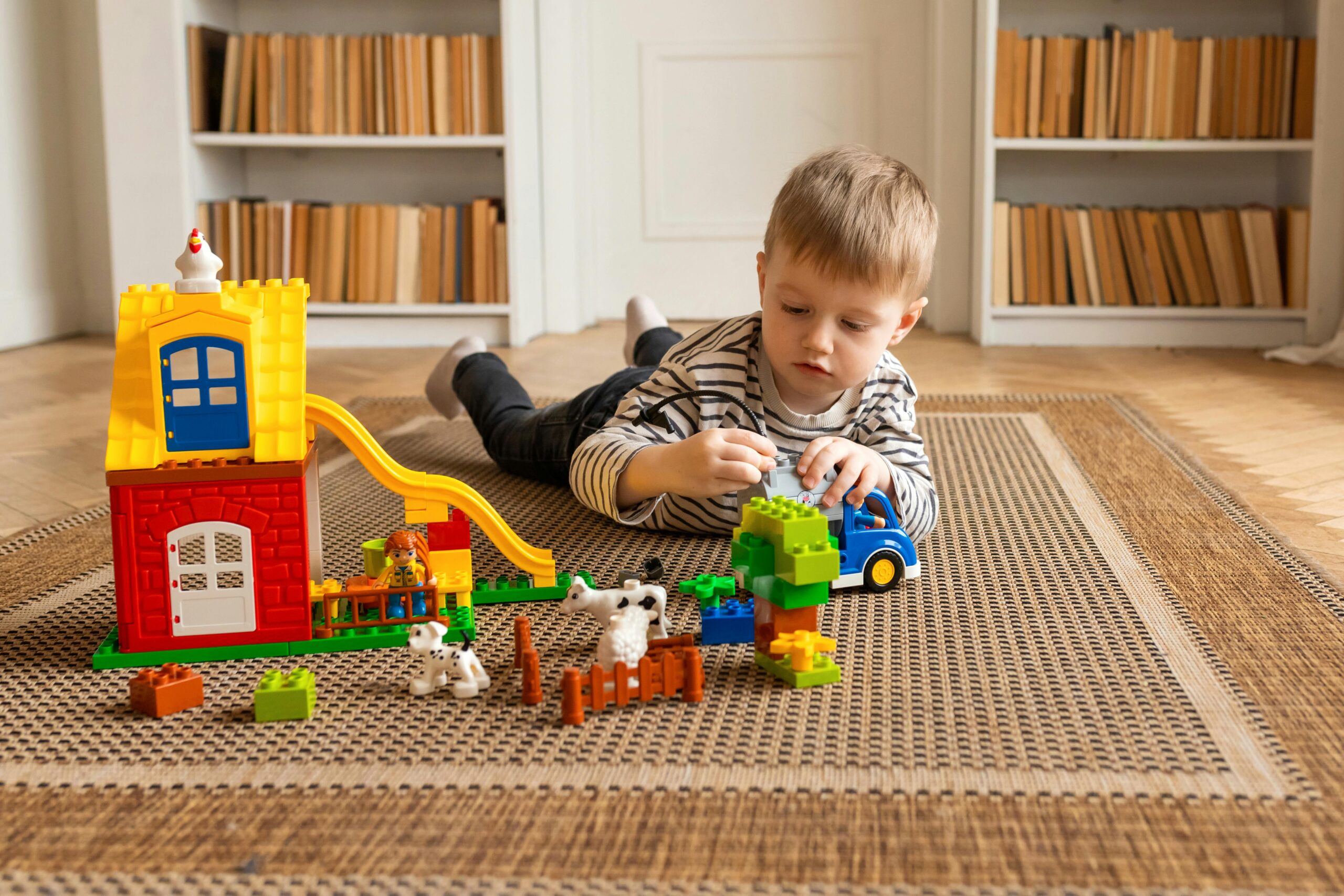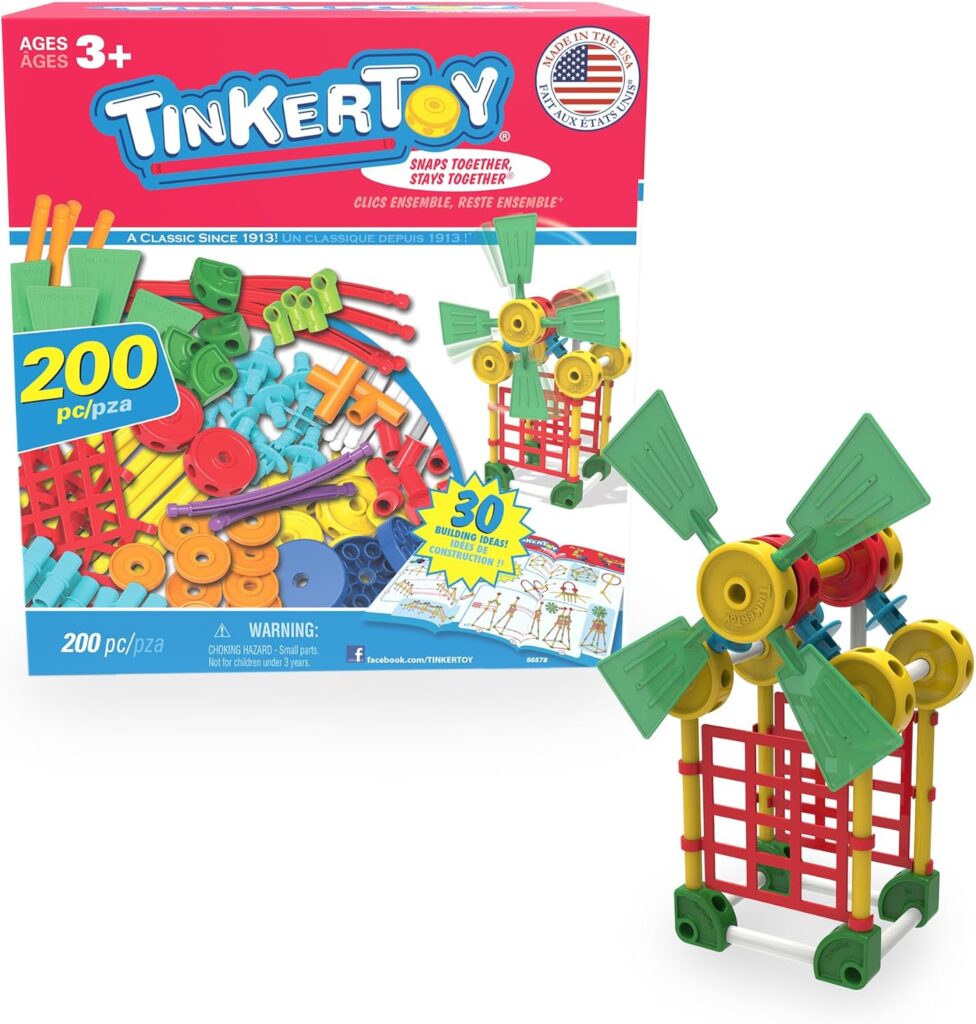
When you think about childhood, what comes to mind? Perhaps it’s the laughter of children running through the park, building sandcastles on the beach, or the inventive little games they create out of sticks, rocks, and their wild imaginations. These beautiful, unstructured moments aren’t just entertaining – they’re essential for your child’s development. This is what’s called open-ended play, and it’s one of the most important aspects of early childhood. Let’s dive into the many benefits of open-ended play and see why it’s something you should be encouraging every single day.
1. What Is Open-Ended Play?
Open-ended play is any type of play that has no predetermined rules or outcomes. It’s all about letting your child explore, experiment, and decide on their own. There’s no “right” or “wrong” way to do it, and there’s no defined end goal. Instead of structured games with instructions, think of activities like building with LEGO bricks, playing with dolls, using playdough, or drawing pictures without a guide. The key is that your child gets to decide how the play unfolds, using their creativity and problem-solving skills.
Products You Can Use: A classic set of LEGO Bricks can be found on Amazon and is highly recommended by parents for encouraging this type of imaginative play. The LEGO Classic Large Creative Brick Box is especially popular, with thousands of 5-star reviews. Kids love using these simple building blocks to create whatever comes to mind, and there’s no limit to the creative scenarios they can develop.
2. Encourages Creativity and Imagination
When you give your child the space to engage in open-ended play, you’re giving them permission to be creative. Imagine your child has a set of wooden blocks; they could build a tower, or perhaps that tower becomes a fortress, then a spaceship, and finally a castle for a princess. The possibilities are endless, and so is your child’s imagination.
When your child isn’t bound by rules or an outcome, they’re more likely to explore new ideas and think outside the box. This freedom fosters a spirit of creativity that will help them in everything they do, whether it’s solving problems in school or thinking of new ways to complete a task in the future.
Products You Can Use: Consider purchasing a set of Melissa & Doug Standard Unit Solid-Wood Building Blocks. They’re simple, durable, and perfect for open-ended play. With over 4,000 5-star ratings on Amazon, they provide endless opportunities for imaginative building, and they are a great way for your child to express their creativity without any rules.
3. Develops Problem-Solving Skills
When a child plays freely, they’re constantly figuring things out on their own. Maybe they build a bridge that falls, and they need to think about how to make it sturdier. Perhaps they’re creating a pretend world where one character is in trouble, and they must come up with a plan to rescue them. These situations help your child develop critical problem-solving skills.
Instead of being told exactly how to complete a task, your child learns through experimentation. They learn to take risks, make mistakes, and try again. This builds resilience and teaches them that mistakes are a natural part of learning – something incredibly valuable as they grow up.
Products You Can Use: Magna-Tiles 32-Piece Clear Colors Set is a great way to challenge your child’s problem-solving skills. Magna-Tiles have over 20,000 highly rated reviews, and they allow kids to create and experiment with different structures and designs, which sometimes need some tweaking to stand properly. It’s all part of the fun!
4. Fosters Independence
Open-ended play is also fantastic for encouraging independence. When a child is engaged in this type of play, they’re the one in charge. They get to decide how the game unfolds, who the characters are, and what happens next. You’re giving them the power to create their own world, and that autonomy helps build confidence.
Imagine your child playing with a dollhouse. There are no instructions, just rooms to arrange, characters to create, and scenarios to imagine. They become the storyteller, and this fosters a sense of ownership and control. By practicing this kind of independence, your child will be better equipped to tackle challenges on their own as they get older.
Products You Can Use: Consider the KidKraft Chelsea Doll Cottage. This beautiful dollhouse has over 8,000 5-star ratings on Amazon. It provides a variety of rooms and accessories but doesn’t come with a fixed storyline. Your child can create their own imaginative scenarios while fostering independence.
5. Supports Social Skills
It may seem surprising, but open-ended play isn’t just important when your child is playing alone – it’s fantastic for developing social skills, too. When kids engage in open-ended play with others, they need to communicate, collaborate, and negotiate. Maybe they’re playing with action figures and deciding which character should be the ‘leader,’ or maybe they’re building a block tower and need to figure out who should place the next piece.
These interactions build vital social skills like turn-taking, listening, and empathy. Even if they’re playing independently, they often narrate scenarios aloud, practicing language and storytelling skills that are vital for social development.
Products You Can Use: Playmobil sets, such as the Playmobil City Life Playground, are ideal for collaborative play. Available on Amazon with great reviews, these sets encourage children to work together to create stories and set up scenarios, all while using their social and communication skills.
6. Reduces Stress and Anxiety
Childhood can be a time of immense joy, but it can also be overwhelming. Kids experience big emotions and don’t always have the tools to manage them. Open-ended play can help. Through play, children can work out their fears, anxieties, and frustrations in a safe space.
When your child has the freedom to act out scenarios with dolls, action figures, or stuffed animals, they’re often processing things happening in their own lives. For instance, a child who’s scared of the dark might create a superhero character who protects against monsters at night. This process helps them feel more in control and less anxious.
Products You Can Use: A set of Melissa & Doug Puppets is a great way for children to express their feelings through storytelling. These puppets, which come with over 3,000 positive reviews on Amazon, allow kids to act out scenarios and work through their emotions, all in a playful, lighthearted way.
7. Builds Fine and Gross Motor Skills
Open-ended play isn’t just great for cognitive and emotional development – it’s fantastic for physical development as well. Whether your child is stacking blocks, sculpting with clay, or running around outdoors pretending to be a superhero, they’re developing both fine and gross motor skills.
Building with LEGO pieces or fitting puzzle pieces together helps develop the small muscles in their hands and fingers, which are critical for writing later on. On the other hand, running, climbing, or even balancing while playing an imaginative game helps develop larger muscle groups, supporting coordination and overall physical health.
Products You Can Use: The Step2 Woodland Climber, provides an excellent opportunity for open-ended outdoor play. Kids can climb, slide, and create their own adventures, all while building their motor skills.

8. Promotes Longer Attention Spans
When a child is deeply involved in open-ended play, they often enter a state of “flow” – where they’re so absorbed in what they’re doing that they lose track of time. This kind of deep engagement is excellent for building attention spans.
In our world, where distractions are everywhere, helping your child develop their ability to focus is a huge benefit. The more your child practices getting lost in their imaginative world, the better they’ll be able to apply that kind of focus in other areas of life, such as schoolwork.
Products You Can Use: Rainbow Stacker, is a favorite open-ended toy with high ratings. It allows children to explore balance, patterns, and structure at their own pace, often leading to lengthy periods of concentrated play.
9. Encourages Love of Learning
Finally, one of the greatest benefits of open-ended play is that it encourages a love of learning. When kids are given the chance to explore and create without pressure, they come to see learning as something fun and enjoyable. They’re more willing to take risks, make mistakes, and try new things – all vital traits for lifelong learners.
With open-ended play, you’re helping your child develop the intrinsic motivation to learn, rather than simply completing tasks for rewards. They learn to enjoy the process of discovery, and that curiosity becomes the foundation of all future learning.
Products You Can Use: TinkerToy Building Sets are an excellent way to encourage learning through play. With thousands of great reviews on Amazon, these sets help children explore engineering concepts without even realizing they’re learning. It’s all about the fun of building and experimenting.

Incorporate Open-Ended Play Every Day
So, how can you encourage open-ended play? The good news is that it doesn’t require anything fancy. Many of the best toys for open-ended play are simple, like blocks, dolls, or art supplies. You don’t need to provide constant supervision or direction – just give your child the tools and the freedom, and let them take the lead.
It can be easy to fall into the trap of thinking kids need structured activities all the time, but giving them space to engage in open-ended play is one of the best things you can do for their development. Whether they’re building castles out of wooden blocks, creating epic adventures with action figures, or drawing fantastical creatures with crayons, they’re learning, growing, and thriving.
Encourage your child to get creative, make mistakes, and explore the world around them. After all, play is the work of childhood, and when it’s open-ended, it’s also one of the best tools we have for raising happy, curious, and resilient kids.